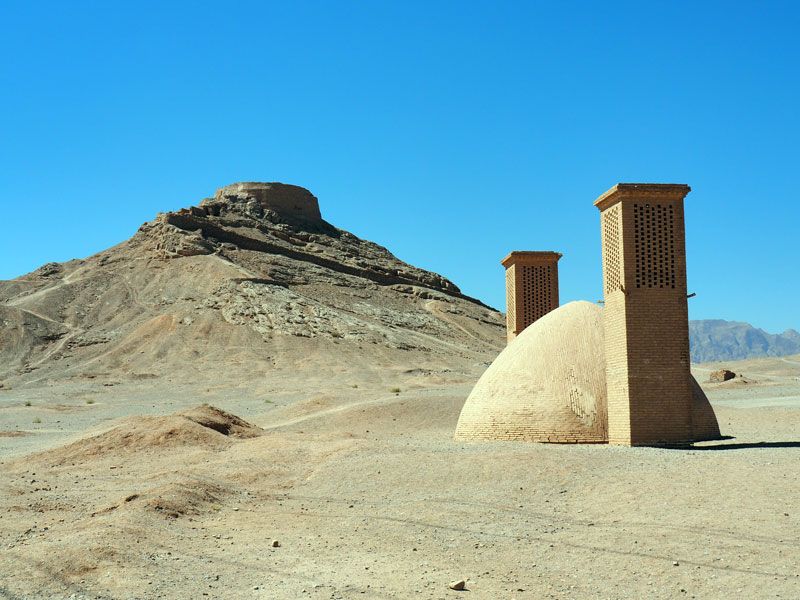Tower of Silence
Hotel

A Dakhma' (Persian: دخمه), also known as the 'Tower of Silence', is a circular, raised structure built by Zoroastrians for excarnation – that is, for dead bodies to be exposed to carrion birds, usually vultures.
Zoroastrian exposure of the dead is first attested in the amid of the -5th century BC Histories of Herodotus, but the use of towers is first documented in the early 9th century CE. The doctrinal rationale for exposure is to avoid contact with Earth or Fire, both of which are considered sacred in the Zoroastrian religion.
One of the earliest literary descriptions of such a building appears in the late 9th-century Epistles of Manushchihr, where the technical term is astodan, "ossuary". Another technical term that appears in the 9th/10th-century texts of Zoroastrian tradition (the so-called Pahlavi books) is dakhmag, for any place for the dead.[2]:206 This Zoroastrian Middle Persian term is a borrowing from Avestan dakhma, of uncertain meaning but related to interment and commonly translated as "grave". In the Avesta, the term is pejorative and does not signify a construction of any kind. In the Iranian provinces of Yazd and Kerman, dakhma continues as deme or dema. Yet another term that appears in the 9th/10th-century texts is dagdah, "prescribed place". The word also appears in later Zoroastrian texts of both India and Iran, but in 20th-century India came to signify the lowest grade of temple fire.In India the term doongerwadi came into use after a Dakhma was constructed on a hill of that name.
The English language term "Tower of Silence" is a neologism attributed to Robert Murphy, a translator for the British colonial government of India in the early 19th century.

 فارسی
فارسی 